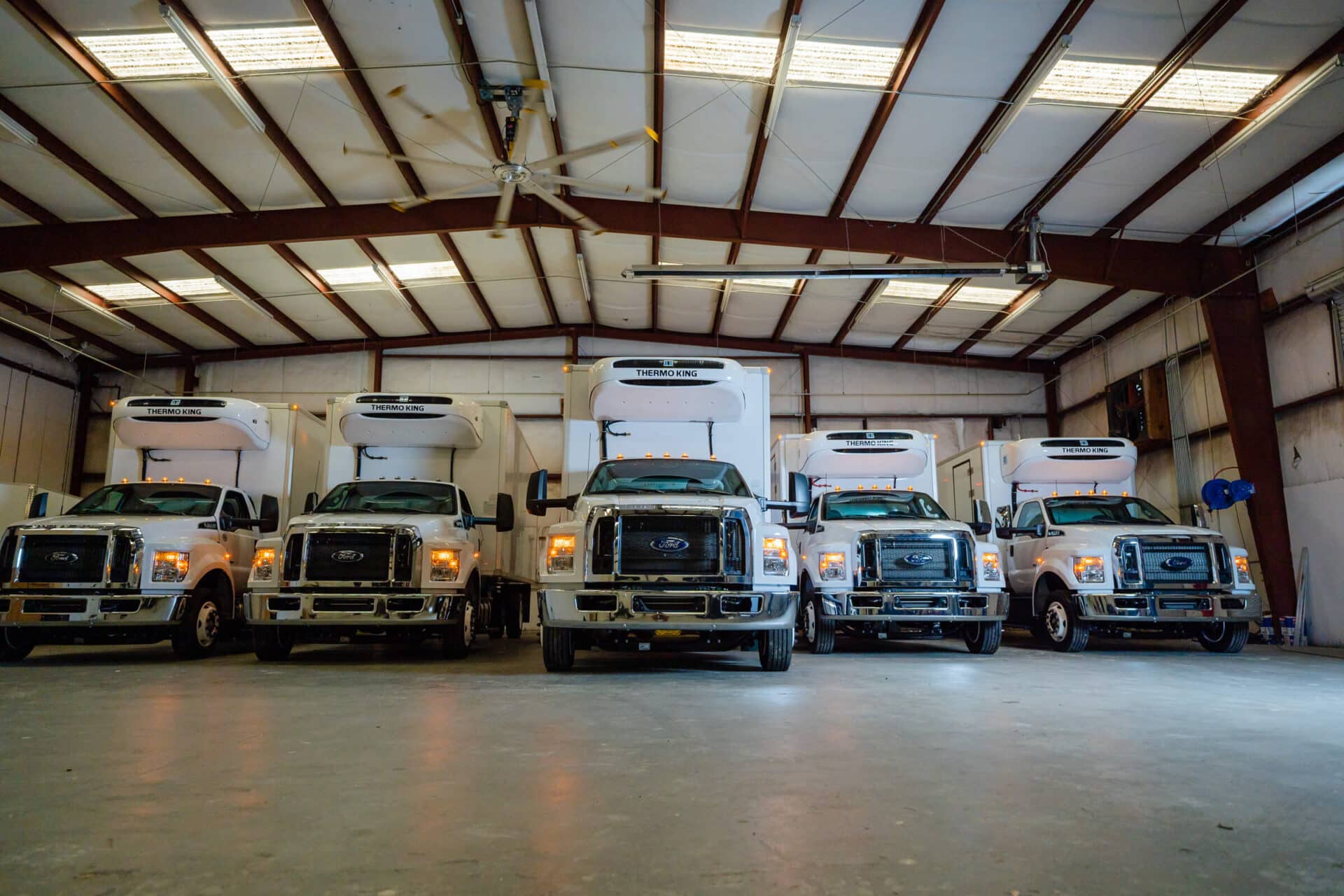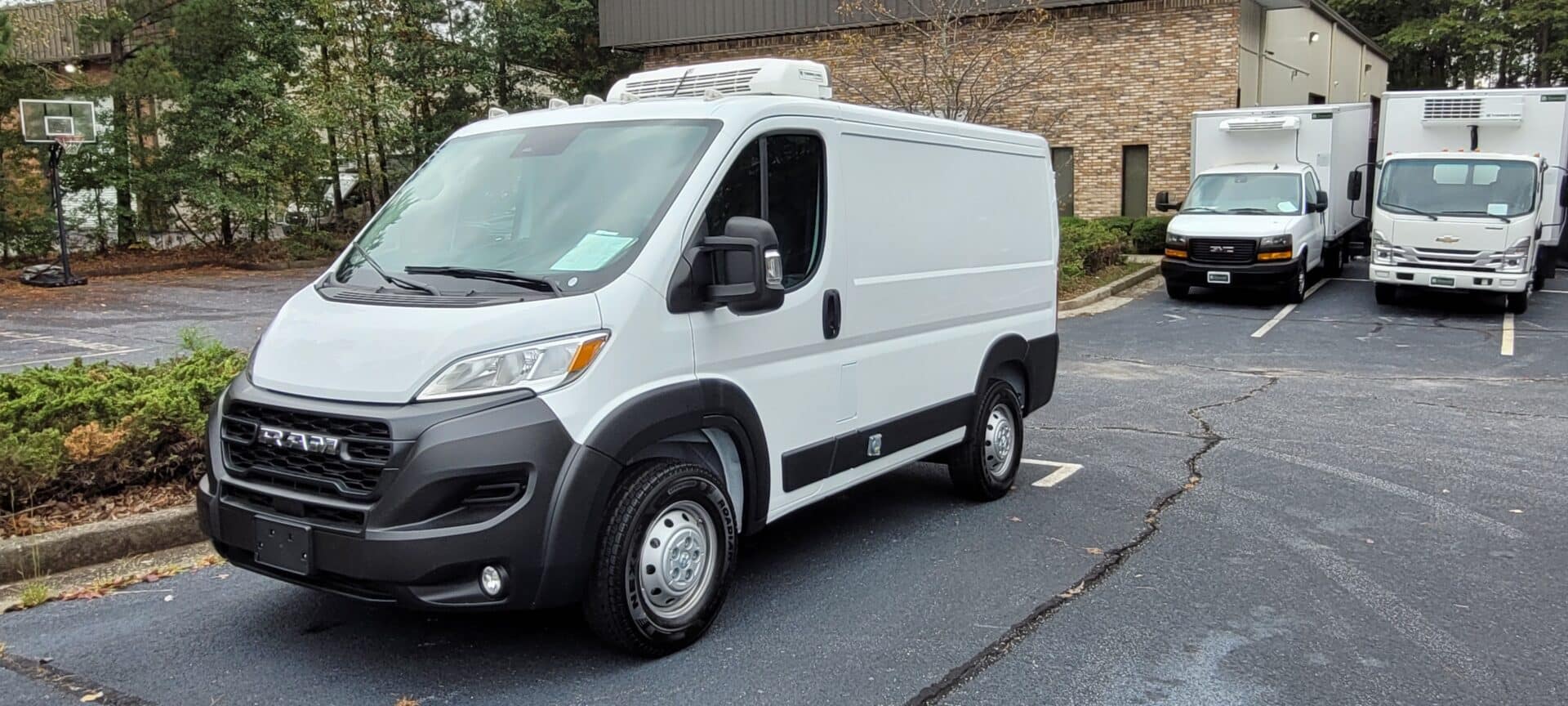
Efficiency Matters: Optimizing Seafood Transport Routes with Refrigerated Vehicles
emerald-admin | April 12th, 2024
In the realm of seafood transportation, time is a critical factor. Every minute counts in preserving the freshness and quality of seafood during transit. At Emerald Transportation Solutions, we understand the importance of efficient route planning and streamlined logistics in seafood transport. Our array of refrigerated vehicles for sale ensures that your seafood arrives at its destination in optimal condition.
Route Optimization and Driver Training
Efficient route planning is the cornerstone of successful seafood transportation. Utilizing advanced software that analyzes historical data, traffic patterns, and weather conditions, as well as route optimization that minimizes transit time and avoids potential delays, is possible. Empowering drivers with training in safety, efficient driving practices, and route familiarity results in consistent reliability and on-time delivery.
Maintaining the Cold Chain
Preserving the cold chain is of premier importance in seafood transport to mitigate the challenges posed by the perishable nature of seafood. Rigorous temperature control, efficient handling, monitoring systems, and time management ensure that seafood maintains its freshness and safety throughout the journey. Protecting the cold chain preserves seafood quality and taste, lengthening its shelf life and enhancing customer satisfaction.
Specialized Refrigerated Vehicles
When it comes to refrigerated transportation for food service providers, our specialized refrigerated vehicles feature advanced insulation and cooling technologies, enabling precise temperature control over extended transit times. This capability allows businesses to reach distant delivery locations while safeguarding product integrity. By minimizing product losses resulting from spoilage, our refrigerated vehicles offer cost-saving benefits and contribute to the financial success of seafood businesses.
Optimized Efficiency and Cost Reduction
Enhanced route planning and heightened fuel efficiency play pivotal roles in slashing costs within seafood logistics operations. Our specialized refrigerated vehicles, when combined with adept route optimization strategies, can empower your business to streamline transportation operations, ultimately leading to substantial savings in operational expenses.
At Emerald Transportation Solutions, a leader among reefer transportation companies, we are committed to providing reliable and efficient seafood transport solutions. Call us today at 678.831.9975 or get in touch through our contact form to learn more about our comprehensive refrigerated vehicle inventory.
Related Articles
Contact Us
Feel Free To Contact Us If You Have Any Questions
What does under DOT mean?
Questions regarding DOT requirements come up often. 10,000 lbs GVW (gross vehicle weight) and over are commercial vehicles that fall under the Department of Transportation regulatory requirements.
What is the difference between GVW and payload?
GVW or Gross Vehicle Weight is the entire weight of the vehicle including the payload. The payload weight represents the amount of cargo you are hauling.
What is a self-powered unit and a vehicle-powered unit?
A self-powered unit has its own fuel source and will run independent of the truck. This is the heaviest and most expensive option. While vehicle-powered units run off the engine via a compressor mounted on the engine. These are less expensive and lighter in weight but you must run the truck or plug the electric standby into shore power.
What does K-factor mean and why is that important?
K-factor is a term that stands for the overall insulating value of the container (truck body). Quite simply the lower the K-factor the better the truck body will be able to maintain a given temperature and require less energy to do so.
How much lighter is a Poly Van vs a US spec body?
Poly Van bodies are very light. On average we estimate we are 75-150 lbs per foot lighter than a traditional sheet and post foamed in place body. These weight savings translates to less fuel burn and less CO2 emissions, along with added payload, the most important benefit.






